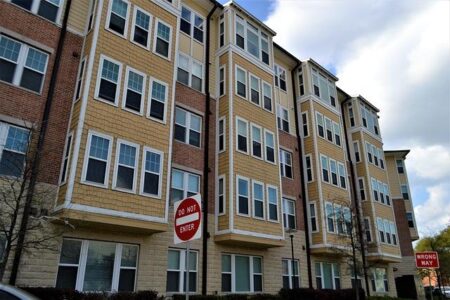One Year of Transformative Leadership at HPD: Chief Noe Diaz Looks Back
Marking his inaugural year as the head of the Houston Police Department, Chief Noe Diaz has navigated a period of significant transformation, focusing on strengthening community relations and operational effectiveness. His tenure has been distinguished by the integration of cutting-edge crime data analysis and a renewed emphasis on collaboration with local neighborhoods. These efforts have contributed to notable improvements in emergency response times and the expansion of officer training initiatives, reinforcing HPDŌĆÖs dedication to openness and responsibility.
Chief Diaz consistently stresses the value of concrete achievements over mere commitments, stating, ŌĆ£results speak louder than words.ŌĆØ To validate the departmentŌĆÖs progress, HPD has monitored key performance indicators that highlight advancements in public safety and community engagement:
- 12% reduction in violent crime across Houston
- 20% growth in community outreach programs
- 15% faster average officer response times
| Metric | Pre-Diaz Baseline | Current Figures | Yearly Improvement |
|---|---|---|---|
| Case Clearance Rate | 45% | 53% | +8% |
| Community Event Attendance | 1,200 | 1,440 | +20% |
| Officer Training Hours | 1,000 hrs | 1,350 hrs | +35% |
Progressive Initiatives to Foster Safety and Community Confidence
Chief Diaz has championed a series of forward-thinking policies designed to enhance public safety while rebuilding trust between law enforcement and HoustonŌĆÖs diverse communities. Central to these efforts is a revitalized community policing model that prioritizes meaningful interactions between officers and residents. Complementing this approach are innovative tools such as live crime reporting platforms and expanded neighborhood watch networks, which facilitate quicker responses and cooperative crime deterrence.
Transparency and accountability have also been elevated through technology adoption, including mandatory body-worn cameras and public dashboards displaying departmental performance. Noteworthy programs introduced include:
- Community Advisory Panels: Regularly convened groups that provide residents a platform to voice concerns and collaborate with police leadership.
- Advanced De-escalation Training: Enhanced curricula aimed at reducing use-of-force incidents and improving officer-resident interactions.
- Youth Engagement Initiatives: Targeted outreach to at-risk young people to build trust and prevent future offenses.
| Initiative | Objective | Impact in Year One |
|---|---|---|
| Community Policing | Strengthen local partnerships | 25% rise in neighborhood engagement activities |
| Body Camera Implementation | Increase transparency | 30% decline in citizen complaints |
| Youth Outreach Programs | Early intervention | 15% decrease in juvenile crime rates |
Overcoming Obstacles and Enhancing Accountability in HPD
Chief DiazŌĆÖs administration has confronted persistent challenges such as rebuilding community trust, streamlining departmental operations, and balancing public safety with transparency demands. His strategy centers on a fact-based, transparent approach, prioritizing measurable progress over rhetoric. By integrating new technologies and revising training standards, the department aims to improve officer effectiveness and foster stronger community bonds.
Key measures adopted include:
- Rigorous enforcement of conduct policies to ensure officer accountability
- Expanded community engagement efforts to deepen police-public communication
- Implementation of real-time performance monitoring systems to track successes and areas needing improvement
| Challenge | Action Taken | Current Status |
|---|---|---|
| Community Trust | Expanded outreach and dialogue programs | In progress |
| Officer Accountability | Strengthened body camera policies | Fully implemented |
| Operational Efficiency | Adoption of new technology platforms | Ongoing |
Looking Ahead: Technology and Training at the Forefront
Looking forward, Chief Diaz envisions the Houston Police Department embracing state-of-the-art technology to further elevate public safety and operational performance. Planned advancements include deploying sophisticated predictive analytics to anticipate crime patterns, integrating body cameras with live monitoring capabilities, and upgrading dispatch systems to reduce emergency response intervals. These initiatives are designed to enhance transparency, accountability, and community collaboration.
Simultaneously, HPD is committed to the continuous professional development of its officers. Upcoming training programs will focus on digital proficiency, mental health awareness, and community engagement techniques. Highlights of the development plan include:
- Leadership development seminars aimed at empowering mid-level supervisors
- Immersive scenario-based training using virtual reality technology
- Ongoing education credits aligned with evolving law enforcement best practices
| Program | Objective | Anticipated Outcome |
|---|---|---|
| AI-Powered Crime Analytics | Proactive Crime Prevention | Lower Crime Incidence |
| Virtual Reality Training | Enhanced Tactical Preparedness | Better Decision-Making Under Pressure |
| Officer Wellness Programs | Improve Mental and Physical Health | Increased Morale and Retention |
Conclusion: Chief Diaz Commits to Delivering Results for Houston
Reflecting on his first year leading the Houston Police Department, Chief Noe Diaz remains steadfast in his mission to produce verifiable improvements for the cityŌĆÖs residents. In a time when public confidence in law enforcement is crucial, Diaz underscores that genuine progress is measured by outcomes rather than promises. His leadership philosophyŌĆöcentered on transparency, accountability, and community partnershipŌĆösends a clear message: success is demonstrated through action. As HPD continues to evolve, HoustonŌĆÖs citizens will be watching closely to see how these initiatives shape the future of safety and trust in their neighborhoods.




